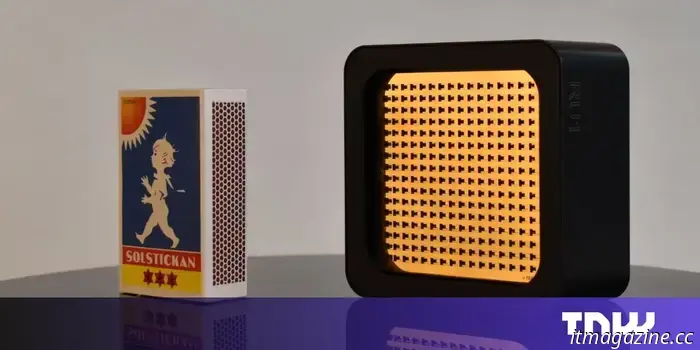
Swedish startup introduces an alternative to Starlink — one that Musk cannot turn off.
A new pocket-sized alternative to Starlink claims to facilitate secure military communications, shielded from interference by billionaire executives. The system, called the RU1, was introduced today by the Swedish startup TERASi. It is marketed as the smallest and lightest mm-Wave radio globally, offering incredibly fast speeds and vast bandwidth.
James Campion, the CEO and co-founder of TERASi, refers to the portable device as “the GoPro of backhaul radios.” He explained to TNW that the RU1 can be set up in minutes, allowing units to remain connected in rapidly changing conditions. The devices can be mounted on tripods or drones, and multiple RU1s can connect to create a robust mesh, facilitating bandwidth for essential applications such as live drone feeds, autonomous fleet management, and sensor data integration.
Additionally, the RU1 cannot be remotely controlled or disabled by outside parties, a significant safeguard missing from SpaceX’s Starlink, whose vulnerabilities have been notably highlighted in Ukraine.
Military control issues arose shortly after Russia’s invasion in February 2022 when Elon Musk, CEO of SpaceX, agreed to provide Ukraine with Starlink in response to the conflict. This satellite internet service became vital for keeping Ukraine’s military and civilian communications operational amid ongoing Russian assaults but faced restrictions during critical times.
In autumn 2022, Musk limited coverage during a Ukrainian counteroffensive in Kherson, disrupting drone surveillance, artillery targeting, and troop coordination, as revealed by a Reuters investigation. Later that year, Musk declined a request to activate Starlink for a naval drone strike near Crimea and was allegedly asked by Vladimir Putin to restrict coverage over Taiwan as a favor to Xi Jinping.
These incidents highlighted the risks associated with a private entity controlling military communications, a concern that TERASi claims the RU1 addresses. “The RU1 provides users complete control over their communications by establishing a secure, high-speed network that they manage independently, without reliance on third-party providers like Starlink, which can be turned off or limited remotely, as demonstrated by the 2022 incident in Ukraine,” stated Campion.
In terms of performance, TERASi positions the RU1 as superior to Starlink. The device employs highly focused antennas that emit very narrow, “laser-like” beams, making them exceptionally difficult to jam or intercept and allowing for ground coverage of less than 3 km. In contrast, Starlink’s lower-frequency radio waves cover approximately 1,000 km, which Campion argues renders it “much more interceptable.”
TERASi claims the RU1 can achieve data rates of up to 10 Gbps—50 times faster than Starlink—with future iterations expected to reach 20 Gbps, offering a genuine wireless alternative to fiber optics. The latency is reported to be less than 5 milliseconds, which is over five times quicker than Starlink, a critical factor for swift response in scenarios like drone detection, according to Campion.
The technology is not limited to military use; TERASi envisions it as a means to provide reliable, high-speed communications in various challenging or remote environments where traditional infrastructure is lacking. In disaster relief, it could quickly restore gigabit connections for first responders without waiting for satellite or fiber repairs. In industrial settings, it could facilitate temporary high-capacity networks for remote construction, mining, or energy operations.
The RU1 is already available for evaluation by defense units, with TERASi integrating it into systems alongside tactical communication providers and drone manufacturers. Campion asserts that the device offers distinct advantages over Starlink: “Satellite communication services like Starlink provide broad coverage useful for connecting static, low data rate sensors and devices to a global network. RU1 allows users to control their data and create independent networks on-demand, shifting the frontline dynamic from relying on existing infrastructure to instant creation, moving from dependence on outsiders to self-sufficiency.”
Although the RU1 may not match Starlink’s global reach, its combination of speed, security, simplicity, and autonomy may be particularly appealing, especially given the risks of a single CEO having the power to disable alternatives at any moment.
Other articles
Swedish startup introduces an alternative to Starlink — one that Musk cannot turn off.
The RU1 provides secure communication for military missions and cannot be disabled remotely by outside operators, in contrast to Starlink.
